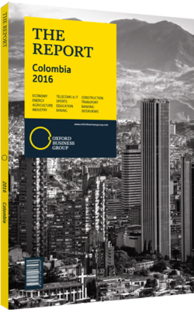Francisco José Lloreda, President, Colombian Petroleum Association: Interview

Interview: Francisco José Lloreda
How will lower oil prices affect drilling activity?
FRANCISCO JOSÉ LLOREDA: Over the past 10 years, Colombia has made considerable progress in the field of drilling exploration. In 2014, 113 wells were drilled, which is a significant increase from an average of 20 wells only a decade ago. Although it is not a high number when compared to other oil-producing countries, it highlights a real interest in oil exploration in Colombia. Taking into account the drop in oil prices, we expect a significant reduction in drilling activity in 2015. Oil companies have forecast 96 drillings, despite having only 67 drillings as part of their contractual obligations. It is understandable that oil firms may need to adjust their budgets due to the dramatic reduction in income, and exploration is often sacrificed first. However, the government is not oblivious to this scenario and it studies measures to encourage exploration, particularly when the proven available reserves account for just seven years of production.
What scope is there for developing natural gas?
LLOREDA: We are aware that demand for gas has risen globally, and we have also seen an increase in demand domestically. Although Colombia has been able to boost its gas reserves in recent years, the current demand is approaching the level of domestic supply. If consumption keeps at the same level and we are not able to find new reserves, estimates indicate that Colombia will become a net gas importer by 2018. That said, shale gas deposits and offshore projects show enormous potential. In this regard, many important projects are under development, while another 23 projects are under evaluation. Our main concern is the need to consider our gas potential as a country, followed by issues in relation to self-sufficiency and gas imports, and, finally, a series of projects that, if successful, would enable us to prolong our self-sufficiency past 2018 and provide new shale gas and offshore projects with the time to develop.
What is the oil industry’s impact on the economy?
LLOREDA: The oil industry, which represents 5.6% of GDP and over 20% of tax revenues, has become one of the main sources of government income. In 2014, COP24trn ($8.8bn) in tax revenues were collected, of which COP8trn ($2.9bn) in royalties were directly invested for local communities. This is a large amount given that the total national budget for investment is COP40trn ($14.7bn). Wanting the oil industry to become a determining factor in the country’s development, the government had been investing up to 80% of royalties in the producing regions. However, due to a recent reform, royalties are now distributed throughout the country, and production areas receive only 20%. Despite this, most goods and services are procured locally, which has a big impact on regional economies. Private oil firms are also investing in roads, benefitting not only themselves but also the population. Although this contribution is not always recognised, it is important and should be valued. Now that the industry is experiencing a difficult situation and exploratory projects are being cut back, revenues have fallen and communities are starting to appreciate the importance of such activities.
Which regulatory changes might increase the investment attractiveness of the industry?
LLOREDA: Oil prices have a direct impact on the attractiveness of energy projects, and this is obviously out of our control. Areas that Colombia can control deal with energy-related policy and regulations. The local fiscal and regulatory framework has positioned Colombia as a competitive country that has attracted international and local investment within its energy sector. Though recent tax reform has created some concerns, it has not prevented the industry’s development. The government has already appointed experts to work on integral structural tax reform. This will open a wider window of opportunity.
You have reached the limit of premium articles you can view for free.
Choose from the options below to purchase print or digital editions of our Reports. You can also purchase a website subscription giving you unlimited access to all of our Reports online for 12 months.
If you have already purchased this Report or have a website subscription, please login to continue.

